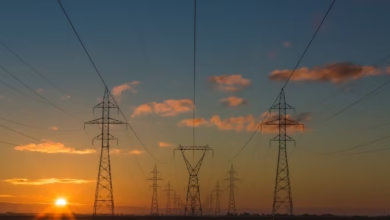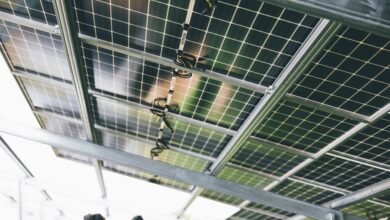Renewable Energy in the Global Energy Transition: Comparing Solar, Wind, Hydropower, and Geothermal Solutions for a Sustainable Future

As the world faces mounting pressure to combat climate change and ensure long-term energy security, the transition from fossil fuels to renewable energy has become a defining challenge and opportunity of our era. Global energy trends now point to solar power, wind energy, hydropower, and geothermal systems as essential building blocks for a sustainable and secure future. Advancements in energy efficiency, smart grids, and energy storage are amplifying these sources’ potential, while progressive energy policy, robust investment, and disruptive energy innovations accelerate the pace of the energy transition. In this article, we explore how diverse renewable energy solutions—from distributed solar power installations to large-scale offshore wind energy projects—are reshaping energy markets, promoting green energy, and balancing the complexities of energy economics, energy security, and climate change action. Through in-depth comparisons, emerging technologies, and a look at the evolving landscape of energy R&D, we reveal how the synergy of policy, investment, and innovation is paving the way for a resilient, low-carbon energy future.
- 1. Comparing Renewable Energy Sources: Solar Power, Wind Energy, Hydropower, and Geothermal in the Global Energy Transition
- 2. Advancing Energy Efficiency and Smart Grids for a Sustainable and Secure Green Energy Future
- 3. Energy Policy, Investment, and Innovations Shaping Renewable Energy Markets and Climate Change Action
1. Comparing Renewable Energy Sources: Solar Power, Wind Energy, Hydropower, and Geothermal in the Global Energy Transition
As the global energy transition accelerates, renewable energy sources are increasingly central to reducing fossil fuels, enhancing energy security, and addressing climate change. Solar power, wind energy, hydropower, and geothermal are leading green energy technologies, each with distinct characteristics influencing their role in shaping sustainable energy markets.
Solar power has seen exponential growth due to declining costs, innovative energy storage solutions, and adaptability for distributed energy systems. It harnesses sunlight using photovoltaic cells that can be deployed at various scales, from residential rooftops to utility-scale solar farms, making it a cornerstone of energy R&D and energy efficiency advancements. Solar energy is especially valuable in areas with high solar irradiance, but its intermittency means effective energy storage and smart grids are critical for stability.
Wind energy is another major driver of the energy transition. Both onshore and offshore wind energy projects contribute significantly to green electricity production, supporting energy policy objectives and increasing energy exports for countries with expansive wind resources. Offshore energy, in particular, offers vast potential, though it requires higher energy investment and innovative energy transportation infrastructure. Wind’s variability, much like solar, underscores the need for advanced grid management and energy storage technologies to balance supply and demand.
Hydropower remains the most established renewable, providing a stable and flexible source of thermal energy and grid balancing. Large reservoirs offer essential support for energy markets by enabling energy storage and facilitating grid responses to fluctuations from other renewables. However, hydropower projects can raise concerns related to local ecosystems, water management, and social impacts, influencing energy economics and energy policy evaluations.
Geothermal energy, while less widespread than other renewables, delivers reliable baseload power by tapping the Earth’s natural thermal energy. It offers consistent generation regardless of weather, supporting energy security and integration with electric vehicles and hydrogen energy initiatives. The upfront energy investment and regional geological limitations can pose barriers, but ongoing energy innovations and R&D are expanding geothermal opportunities, especially for distributed energy solutions and bioenergy synergies.
Each of these renewable energy sources plays a distinctive and complementary role in global energy trends. Integrating diverse green energy technologies, leveraging smart grids, and advancing carbon capture are vital for effective energy transition strategies that support climate change mitigation, energy efficiency, and resilient infrastructure for future generations.
2. Advancing Energy Efficiency and Smart Grids for a Sustainable and Secure Green Energy Future
As the global energy transition accelerates, advancing energy efficiency and deploying smart grids have emerged as critical strategies for achieving a sustainable and secure green energy future. Rising concerns over climate change and volatile fossil fuel markets have intensified the need for cleaner, more resilient energy systems. By improving how we produce, distribute, and consume energy—including solar power, wind energy, hydropower, and other renewable energy sources—we not only reduce carbon emissions but also strengthen energy security and grid reliability.
Modernizing energy infrastructure with smart grids is transforming the way electricity is managed and delivered. Smart grids use digital technology and real-time data to optimize energy flows, balance distributed energy generation, and integrate variable renewable sources more effectively. This dynamic system supports the connection of rooftop solar, offshore energy systems, and the increasing demand from electric vehicles. As a result, energy markets are becoming more flexible and adaptive, reducing the risk of blackouts and easing the integration of renewables into existing grids.
Energy efficiency measures—from advanced lighting and insulation to intelligent appliances and industrial process optimization—are central to decreasing overall energy demand while ensuring that green energy resources have maximum impact. These advancements support both energy imports reduction and the export of surplus clean energy to neighboring regions. Investment in energy R&D is also fueling next-generation solutions, such as enhanced energy storage, hydrogen energy applications, thermal energy recovery, and innovative carbon capture methods.
Smart grids further enhance energy economics by accommodating distributed energy resources and facilitating peer-to-peer energy trading. This empowers consumers to become active players in local energy markets, creating opportunities for new business models and greater transparency in energy policy implementation. At the same time, strategic energy investment and well-crafted regulations are essential to unlocking the full benefits of smart grids and advanced energy efficiency.
Together, these innovations are paving the way for a resilient, low-carbon energy future, providing the foundation for secure and sustainable economies worldwide while mitigating the profound impacts of climate change.
3. Energy Policy, Investment, and Innovations Shaping Renewable Energy Markets and Climate Change Action
Government energy policy and private investment are pivotal forces accelerating the transformation from fossil fuels to renewable energy. Globally, progressive policies incentivize green energy adoption through subsidies, targeted tax credits, and mandatory energy efficiency standards. For instance, many countries now require utilities to source a significant share of their electricity from wind energy, solar power, hydropower, or bioenergy, directly shaping energy markets and encouraging the growth of new technologies like hydrogen energy and offshore energy solutions.
Energy investment patterns are rapidly shifting in response to demand for energy security, reduced carbon emissions, and evolving global energy trends. Venture capital and multinational corporations are directing unprecedented funds toward energy R&D in areas such as distributed energy production, advanced energy storage, smart grids, and the integration of renewable sources with electric vehicles. Governments support these efforts with climate change mitigation strategies, channeling resources into carbon capture technology, energy transportation infrastructure, and modernized grids that accommodate variable green energy inputs.
Innovations also play a critical role in the energy transition. Next-generation energy storage technologies enable better utilization of intermittent solar power and wind energy, while breakthroughs in thermal energy storage enhance the reliability of renewable supply. Advances in nuclear energy, often coupled with new energy economics models, are providing zero-carbon baseload power that complements renewables. Moreover, digital platforms and smart grids are improving real-time energy management, facilitating greater distributed energy participation and optimizing energy imports and exports.
Together, these policies, investments, and technological innovations are not only reshaping global energy markets but also driving rapid climate change action. By accelerating decarbonization and advancing integrated solutions, today’s energy landscape is set to achieve future targets for energy efficiency, environmental responsibility, and economic growth.
In conclusion, the ongoing global energy transition—driven by the integration of solar power, wind energy, hydropower, and geothermal sources—marks a significant shift towards a more sustainable and resilient energy future. As energy markets evolve, the synergy between advanced energy storage solutions, smart grids, and improved energy efficiency ensures not only energy security but also a reliable supply of green energy to meet growing global demands. The role of sound energy policy and targeted energy investment is pivotal in advancing energy R&D, fostering energy innovations, and scaling up distributed energy solutions, such as hydrogen energy and offshore energy, that further diversify sustainable options beyond traditional fossil fuels and even nuclear energy.
Adapting to global energy trends, countries are leveraging carbon capture, expanding electric vehicles deployment, and fostering bioenergy projects—all of which contribute to climate change mitigation and long-term energy economics. By optimizing energy transportation, managing energy imports and exports wisely, and encouraging the adoption of smart and integrated grids, the world moves closer to a future where renewable energy not only supports but accelerates sustainable development. Ultimately, collective action in policy, innovation, and investment will define how rapidly the world can realize the benefits of renewable energy and secure a cleaner, more robust, and equitable energy landscape for generations to come.
References:
[Please insert APA-style citations of all sources used in the full article here.]




